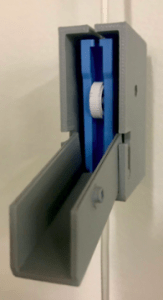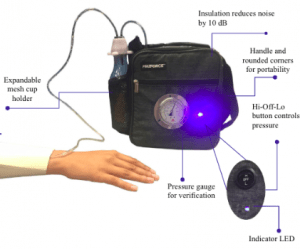Although I have been counting down the days until our trip to Brazil since I received the acceptance email, my desire to participate in the Rice 360 internship sparked during the first weeks of my freshman year. I remember hearing how teams of Rice undergraduates were able to apply their technical skills to create devices that addressed the medical needs of community members in low resource settings. As a bioengineer interested in addressing health disparities between developed and developing countries, the opportunity sounded like something out of a dream (It sounds cheesy but it’s true!). This summer I will be traveling to Barretos, Brazil and working in the Barretos Cancer Hospital with Diego Gonzalez, a fellow Bioengineer and friend.
Preparing for Brazil
There are exactly three weeks until Diego and I leave to Barretos. In preparation, we’ve been busy at work at the OEDK learning about and constructing Rice 360 technologies. We have also reached out to past Rice 360 teams and senior design teams in order to acquire all relevant literature and computer files (CAD and laser cutting files) needed to understand the inner workings of each device we plan to take. We will be taking four devices to Barretos:
- The IV Drip Block (pictured) — a portable, 3D printed fixture that prevents non-clinicians from tampering with the IV dosage.
- The Cervical Cancer Thermocoagulation Model– a reusable, heat-resistant training device meant for clinicians to practice implementing thermocoagulation treatment.
- ACE (Anal Cancer Evaluation Model)– a reusable, educational model intended to train clinicians how to conduct an anoscopy.
- The WounderWoman Device (pictured) — a durable and portable device which applies negative pressure to large wounds in order expedite the healing process.
I’ve really enjoyed learning about each of these technologies and how their creators approached a given global health issue. Going through each team’s documentation of their projects, it’s amazing to see how they implemented common, affordable materials to address major health issues all while keeping the patient and their needs as the focal point of their design criteria. The engineers behind each of the projects clearly tried to think outside the box and place themselves in the shoes of someone in a low resource setting in order to create a successful product. I look forward to getting feedback from the doctors in Barretos on each of the devices and understanding the implications of these devices in a real, clinical setting.
We are currently waiting for most of the ordered materials to arrive at the OEDK. In the meantime, Diego and I have prepared any and all parts of the devices using materials already available at the OEDK. This includes all laser cut and 3D printed pieces. We have also started looking into the types of resources available in Barretos. Conveniently, Diego and I found that a new makerspace (FEB 360) was built last November at the university in Barretos, UNIFEB. The space looks BEAUTIFUL online and comes complete with 3D printers, a CNC router, laser cutters, power tools, and ample space to work on projects. We are currently in the process of emailing the university and maker space to see if we might be able to gain access to the FEB 360. Fingers crossed!
Personal Goals
I can already tell that this experience will be invaluable to me as an engineer and overall person. Before I leave, I would like to establish some goals for myself for when I am in Brazil:
- Think outside the box. When designing devices in well-stocked facilities like the OEDK, it’s easy to become oblivious to what resources patients and clinicians in Barretos have access to. Solutions that look nice on paper may not translate well to the clinical setting and that’s ok!! When approaching these global health issues, I will be resourceful and employ my unconventional wisdom. There is always a way!
- Be comfortable getting uncomfortable. I have lived in Houston for FIFTEEN years in all and have become very used to my environment and culture. While I’m counting down the minutes until we leave to Barretos, I know there will be some amount of culture shock. I want to embrace the change. I’m excited to learn more about Brazilian culture and how to work with various partners. I also want to become comfortable speaking up and asking questions pertaining to patient care and treatment even if that means pulling out my Portu-ñol and asking patients and doctors myself. At the end of the day, we are designing solutions for patients and so their feedback is invaluable to us as engineers.
- Fala mais Portugues! I used to live in Rio de Janeiro when I was in middle school. While I was there, my Portuguese, like my love for pão de queijo, flourished and I became fluent. Fast forward seven years later and my Portuguese is mostly Spanish. While the two are very similar and I might be able to get away with simply speaking in Spanish, where’s the challenge in that?? I believe that speaking to patients and clinicians in their own language shows a certain level of respect and familiarity and would make them more comfortable to sharing feedback on our devices.
- Establish meaningful relationships. I look forward to meeting the patients, nurses, doctors, and other engineers at the hospital in Barretos and learning more about their approaches to health issues. Furthermore, if we are able to partner with UNIFEB, I am excited to talk to students and see what the engineering curriculum looks like in a different country. Beyond the technical side of this experience I am eager to making new friends and experiences in Barretos!
Lastly, I would like to thank Rice 360, Mr. and Mrs. Vickery, and my parents for supporting me and preparing me for this amazing opportunity. Thank you! Thank you! Thank you! I am excited to see how this journey goes and I look forward to sharing my experiences with you!
Signing off!
Paula


